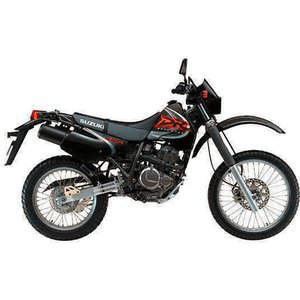Suzuki DR 350 [1994–2000]: The Unpretentious Dual-Sport Legend Revisited
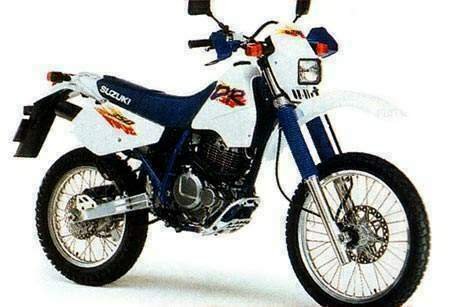
Introduction
The Suzuki DR 350 isn’t just a motorcycle—it’s a passport to adventure. Produced from 1994 to 2000, this air-cooled thumper carved its niche as a rugged, no-nonsense dual-sport machine that could tackle dirt trails, fire roads, and even weekday commutes with equal ease. Decades later, the DR 350 remains a cult favorite among riders who value simplicity, durability, and a raw connection to the riding experience. Having spent time aboard a well-preserved 1998 DR 350 SE, I’m here to unpack why this bike still resonates with enthusiasts and how it stacks up in today’s world of high-tech ADV machines.
Design & Ergonomics: Function Over Flair
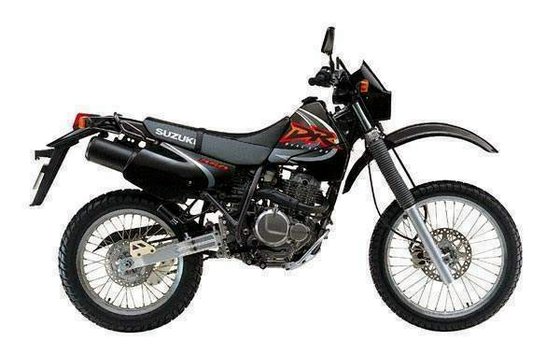
The DR 350’s design philosophy is refreshingly straightforward. Its steel diamond frame, minimalist bodywork, and utilitarian proportions scream “workhorse,” not “show pony.” The 35-inch (890 mm) seat height might intimidate shorter riders, but the narrow chassis and 287-pound (130 kg) dry weight make it manageable once you’re moving. Standing at 5'9", I found the ergonomics neutral for both seated cruising and standing off-road maneuvers, though aftermarket handlebar risers could benefit taller riders.
Suzuki’s choice of a 21-inch front wheel and 18-inch rear (shod with 80/100-21 and 110/90-18 tires, respectively) gives the DR a confident stance on uneven terrain. The analog instrumentation—a speedometer, odometer, and basic warning lights—is a stark contrast to modern TFT displays, but it’s legible and utterly reliable. Finish quality? Let’s just say chrome and corrosion resistance weren’t Suzuki’s priorities here. Check used examples for rust on the exhaust and frame, but know that the essentials (engine, suspension) are built to outlast Armageddon.
Performance: Modest Power, Maximum Versatility
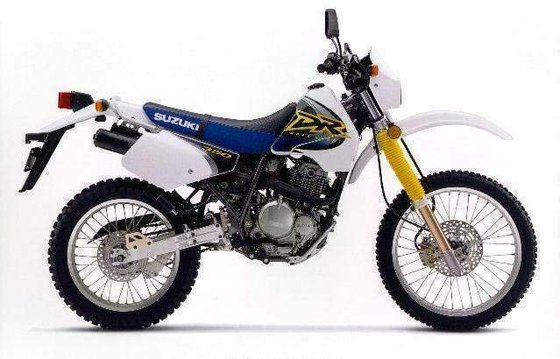
Engine & Transmission
The 349cc SOHC single-cylinder engine is the heart of the DR 350 experience. With 27–30 HP (20–22 kW) and 21–29 Nm of torque, it’s no fire-breather, but the power delivery is linear and forgiving—perfect for learners or riders prioritizing control over bravado. The Mikuni BST33 carburetor (a common pain point in cold starts) rewards patience with smooth throttle response once warmed up.
What truly shines is the 6-speed gearbox. First gear crawls up technical inclines without stalling, while sixth hums along comfortably at 65 mph (105 km/h). The DR won’t win drag races—its 0–60 mph (0–97 km/h) time hovers around 7 seconds—but it’s zippy enough for urban traffic and surprisingly composed on highways if you tuck behind the tiny windscreen (a popular aftermarket add-on).
On-Road Manners
On pavement, the DR 350 feels like a supermoto that forgot to put on its street tires. The suspension—43 mm telescopic forks with 11 inches (280 mm) of travel up front and a link-type rear shock with 10 inches (254 mm)—is plush over potholes but soft for aggressive cornering. Lean it into a bend, and the chassis communicates clearly, though the stock IRC tires protest loudly before reaching their limits. Braking? The single 250 mm front disc (dual-piston caliper) and 220 mm rear disc (single-piston) lack bite by modern standards but are adequate for the bike’s weight.
Off-Road Prowess
Dirt is where the DR 350 truly comes alive. The soft suspension soaks up rocks and roots, and the torquey engine pulls cleanly from low RPMs. In sandy washes or deep mud, the 30 HP feels anemic compared to 450cc rivals, but the lightweight chassis lets you pivot and correct mid-slide effortlessly. My test bike’s lack of a front rim lock led to a spun tire during hard braking—a reminder to upgrade to a rim lock kit (hint: MOTOPARTS.store stocks them).
Competition: How the DR 350 Stacks Up
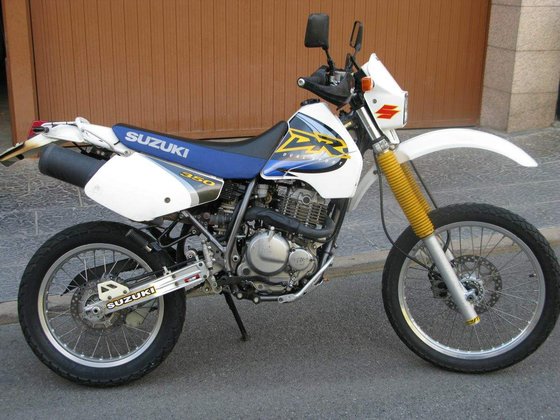
In the ’90s dual-sport arena, the DR 350 faced three key rivals:
- Honda XR250L/XR400R: Honda’s XRs were lighter and slightly nimbler off-road but lacked the DR’s sixth gear and electric starter (on SE models). The XR400R, while more powerful, was kick-start-only—a dealbreaker for many.
- Yamaha TT350: Yamaha’s twin-carb TT350 offered comparable power but suffered from complexity (two carburetors!) and poorer parts availability today.
- Kawasaki KLR250: The KLR was cheaper but heavier, with a dated 249cc engine that struggled on highways.
Modern competitors like the Honda CRF300L and Yamaha WR250R outclass the DR 350 in power and tech (fuel injection! ABS!), but they’re also 50–70 lbs heavier and lack the Suzuki’s vintage charm. For riders who value mechanical simplicity and a thriving aftermarket, the DR 350 remains relevant.
Maintenance: Keeping the Legend Alive
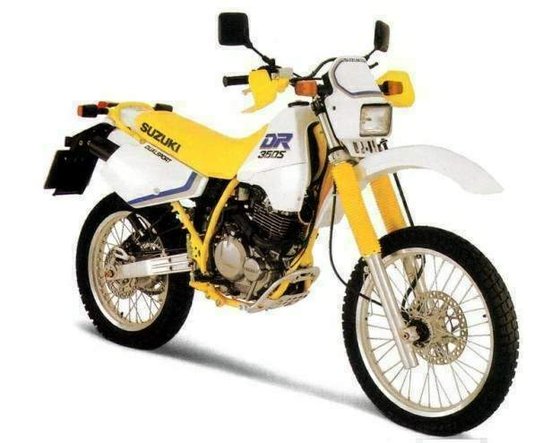
The DR 350’s maintenance routine is refreshingly low-tech—a boon for DIYers:
Key Service Points
- Valve Adjustments: Check every 3,000 miles (4,800 km). Intake valves: 0.05–0.10 mm (0.002–0.004 in), exhaust: 0.08–0.13 mm (0.003–0.005 in). Shim-under-bucket design requires patience but no special tools.
- Oil Changes: Use 10W-40 JASO-MA oil. Capacity: 1.7 L (1.8 qt) without filter, 1.9 L (2.0 qt) with. The dry-sump system minimizes oil starvation during hard cornering.
- Carburetor Tuning: The Mikuni BST33 benefits from periodic cleaning, especially if the bike sits. Air screw adjustment: 1.5–2 turns out (varies by year).
- Chain & Sprockets: The 520 chain (102–110 links) and 14–15T/41–43T sprockets wear quickly under aggressive off-road use. Upgrade to an O-ring chain for longevity.
Common Upgrades
- Suspension: Heavier fork oil (10W) and aftermarket shocks (e.g., Progressive Suspension) transform the soft stock setup.
- Tires: Swap the stock IRCs for Pirelli MT21s or Dunlop D606s for aggressive off-road grip.
- Exhaust: A free-flowing slip-on (FMF, Yoshimura) adds 2–3 HP and sheds weight.
Conclusion: Timeless, Not Outdated
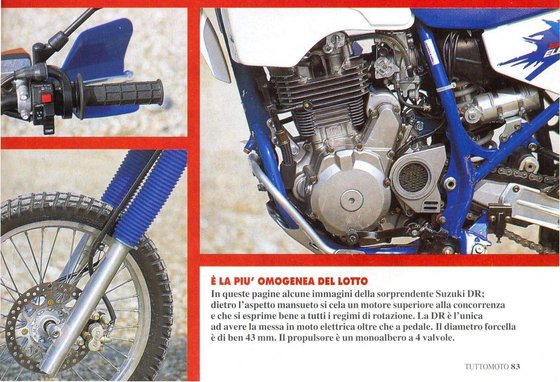
The Suzuki DR 350 isn’t about cutting-edge specs or Instagram appeal. It’s about the joy of riding something honest, durable, and endlessly adaptable. Whether you’re threading through single-track trails, lane-splitting in traffic, or just reliving the ’90s golden era of dual-sports, the DR 350 delivers with a grin-inducing lack of pretension.
At MOTOPARTS.store, we’re proud to support this legend with upgrades that honor its simplicity—because sometimes, the best adventures begin with a kickstart (or the push of a button, if you’re lucky).
Ready to personalize your DR 350? Explore our curated selection of tires, suspension kits, and carburetor upgrades tailored for Suzuki’s enduring dual-sport.
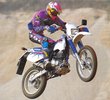
Specifications sheet
| Engine | |
|---|---|
| Stroke: | Four-stroke |
| Max power: | 30 kW | 40.0 hp |
| Max torque: | 29 Nm |
| Fuel system: | Mikuni BST33 carburetor |
| Max power @: | 7600 rpm |
| Displacement: | 349 ccm |
| Max torque @: | 6200 rpm |
| Bore x Stroke: | 79.0 x 71.2 mm (3.1 x 2.8 in) |
| Configuration: | Single |
| Cooling system: | Air-cooled |
| Compression ratio: | 9.5:1 |
| Lubrication system: | Dry sump |
| Number of cylinders: | 1 |
| Dimensions | |
|---|---|
| Wheelbase: | 1450 mm (57.1 in) |
| Dry weight: | 130 |
| Seat height: | 890 mm (35.0 in) |
| Overall width: | 885 mm (34.8 in) |
| Overall height: | 1245 mm (49.0 in) |
| Overall length: | 2235 mm (88.0 in) |
| Ground clearance: | 290 mm (11.4 in) |
| Fuel tank capacity: | 9.0 L (2.4 US gal) |
| Drivetrain | |
|---|---|
| Final drive: | chain |
| Chain length: | 110 |
| Transmission: | 6-speed |
| Rear sprocket: | 44 |
| Front sprocket: | 15 |
| Maintainance | |
|---|---|
| Rear tire: | 110/90-18 |
| Chain size: | 520 |
| Engine oil: | 10W40 |
| Front tire: | 80/100-21 |
| Break fluid: | DOT 4 |
| Spark plugs: | NGK DPR9EA-9 or NGK CR9EK |
| Spark plug gap: | 0.6 |
| Forks oil capacity: | 1.14 |
| Engine oil capacity: | 1.9 |
| Engine oil change interval: | Every 5000 km or 2 years, whichever comes first |
| Valve clearance (intake, cold): | 0.05–0.10 mm |
| Valve clearance check interval: | 24,000 km / 15,000 mi |
| Valve clearance (exhaust, cold): | 0.08–0.13 mm |
| Recommended tire pressure (rear): | 2.0 bar (29 psi) |
| Recommended tire pressure (front): | 1.6 bar (23 psi) |
| Chassis and Suspension | |
|---|---|
| Frame: | Diamond steel |
| Rear brakes: | Single 220 mm disc, 1-piston caliper |
| Front brakes: | Single 250 mm disc, 2-piston caliper |
| Rear suspension: | Link-type monoshock, adjustable spring preload, compression, and rebound damping |
| Front suspension: | Telescopic fork, cartridge-type, 13-way adjustable compression damping, 17-way rebound damping |
| Rear wheel travel: | 254 mm (10.0 in) |
| Front wheel travel: | 280 mm (11.0 in) |



